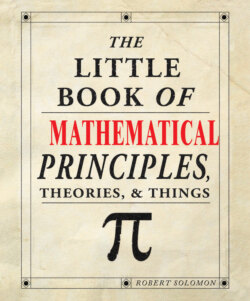Читать книгу The Little Book of Mathematical Principles, Theories & Things - Robert Solomon - Страница 16
На сайте Литреса книга снята с продажи.
6th century BC Greece Regular Polygons
ОглавлениеA regular polygon has equal angles and equal sides.
_______________
Examples of regular polygons are the equilateral triangle (all sides equal, all angles equal to 60°) and the square (all sides equal, all angles equal to 90°). Then comes a pentagon, then a hexagon, and so on.
How do you draw these shapes? Greek mathematicians were very particular about exactness in geometry, and required exact constructions. They would not allow a protractor to measure and draw angles, because one cannot do so exactly. They did not allow a ruler to measure and set out lengths, as one cannot be sure one has the exact length. These constructions had to be made with two instruments only – a straight edge and compasses.
Constructions of an equilateral triangle and a square are part of school mathematics. The construction of a triangle is shown.
The line AB is drawn, then arcs of the same length as AB are drawn to intersect at C. Notice that a straight edge has been used to draw the lines, and compasses to draw the arcs. We do not need to use a protractor to measure an angle of 60°.
With a lot more work, it is possible to construct a regular pentagon. Hexagons and octagons are straightforward. Heptagons (7 sides) and nonagons (9 sides) had to wait!
The diagram shows the construction of an equilateral triangle.
